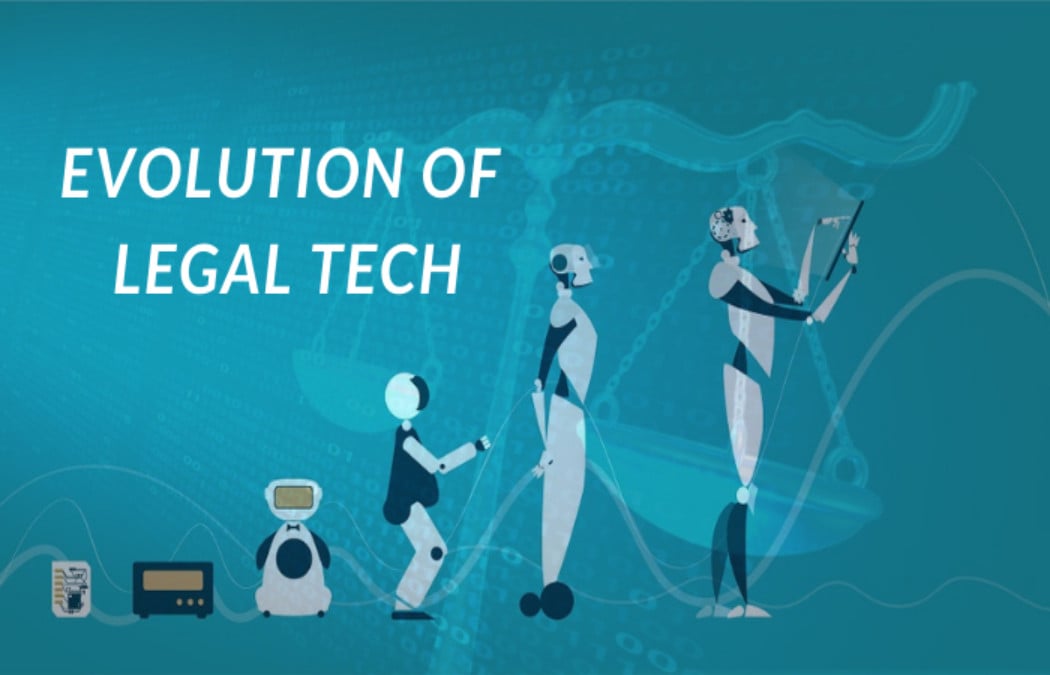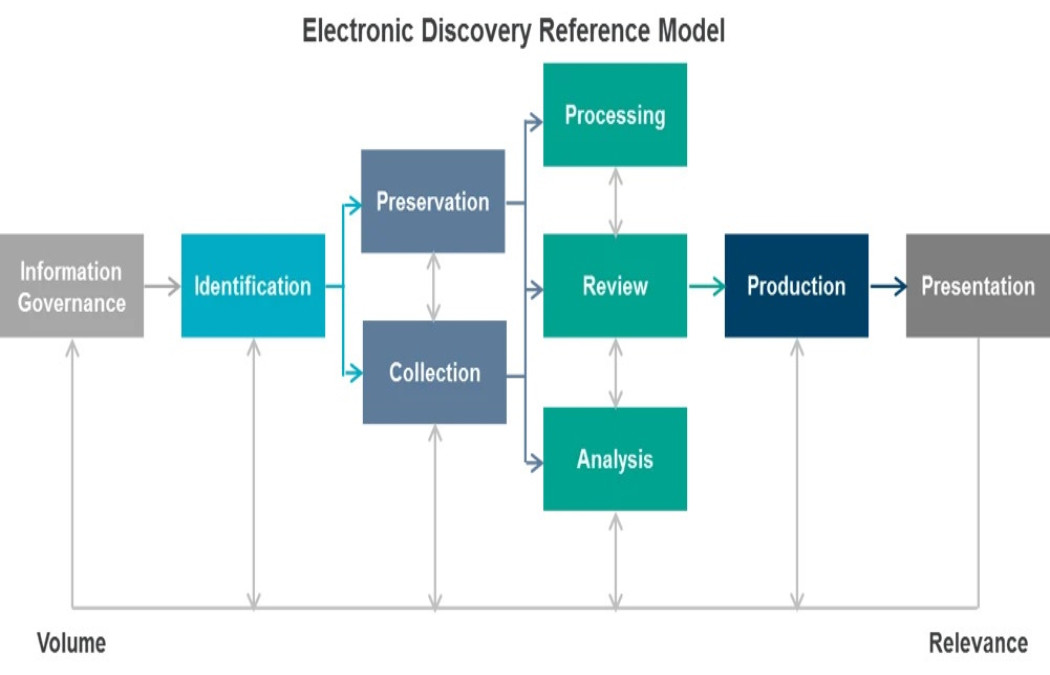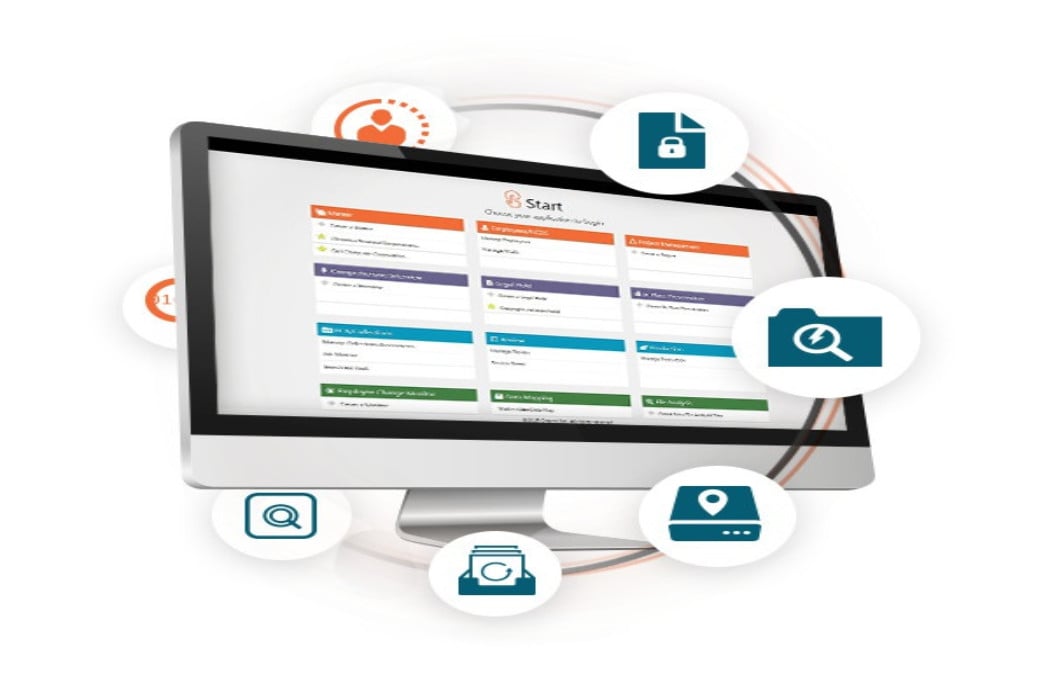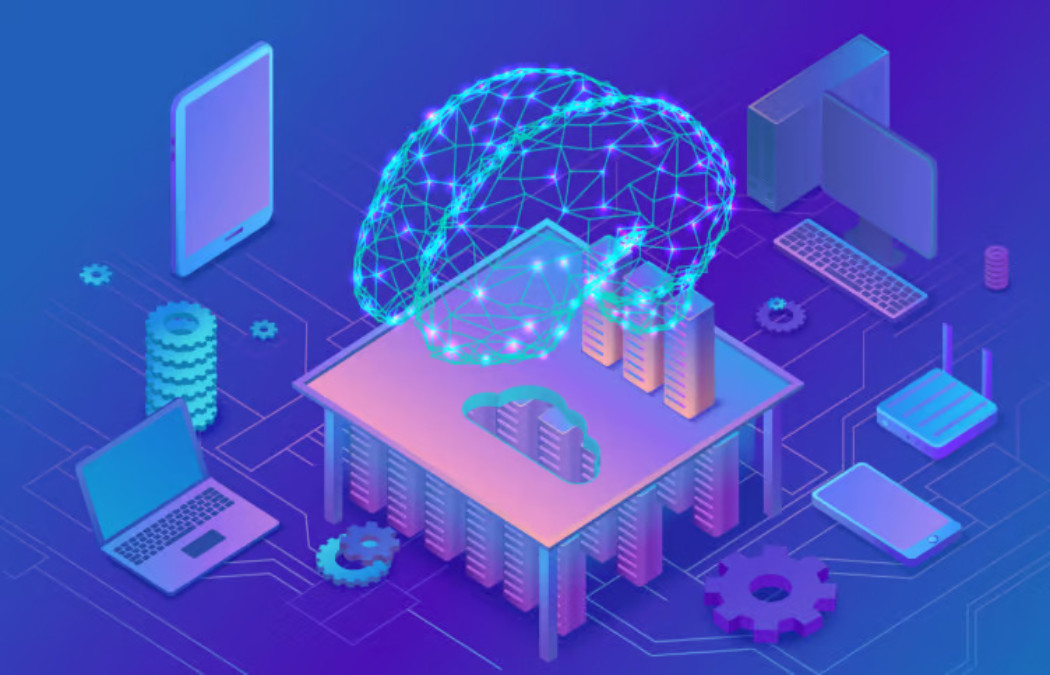1. Introduction
The term E-Discovery, short for Electronic Discovery, may not be familiar to everyone, but it holds a central position in today’s legal and corporate environments. In essence, E-Discovery refers to the process where electronic data is sought, located, secured, and searched with the intent of using it as digital evidence in legal cases. With the advent of the digital age, where a substantial amount of our information is stored electronically, understanding the facets of E-Discovery has become more crucial than ever.
The importance of E-Discovery is twofold. Firstly, it ensures that vital electronic evidence is not overlooked in legal proceedings, adding a layer of depth and detail that may otherwise be missed. Secondly, for corporations, it plays an indispensable role in compliance, data management, and risk assessment, extending its relevance beyond the courtroom.
The aim of this article is not just to provide a cursory overview but to delve into the complexities of E-Discovery. We will explore its history, key terminologies, processes, tools, and best practices. By the end of this comprehensive guide, you’ll have a strong foundation in what E-Discovery is, why it matters, and how it’s shaping the future of legal and data management landscapes.
Whether you’re a legal professional, an IT expert, or someone simply interested in the intersection of law and technology, this article aims to be your one-stop guide to understanding E-Discovery.
2. Historical Background
The concept of discovery is not new to the legal realm; it’s a practice that has been around for centuries, allowing parties in a legal case to obtain evidence from each other. However, with the rise of the digital age and the ubiquity of electronic data, the scope of discovery had to evolve, giving birth to what we now know as E-Discovery.
In the United States, one of the landmark moments that catalyzed the formalization of E-Discovery was the amendment of the Federal Rules of Civil Procedure (FRCP) in 2006. This amendment made it explicitly clear that electronically stored information (ESI) is discoverable, thereby necessitating lawyers and corporate entities to become proficient in managing digital data as potential evidence. Similar regulations have emerged globally, acknowledging the pertinence of electronic information in legal proceedings.
One of the milestone cases that put E-Discovery under the spotlight was Zubulake v. UBS Warburg, a case that set precedence on how electronic evidence should be preserved and handled. The rulings from this case established duties and responsibilities for legal teams, particularly emphasizing the role of legal holds in preserving ESI.
The field has continued to evolve, with newer challenges and complexities arising from cloud computing, social media, and encrypted communications. Each of these technological advancements has left an indelible impact on E-Discovery, requiring ongoing adaptations in both legal and technological practices.
Understanding the historical background of E-Discovery provides context for its current practices and anticipates its future trajectory. With its roots firmly planted in traditional legal principles but its branches extending into technological advancements, E-Discovery is indeed a blend of the old and the new.
3. Key Concepts in E-Discovery
Navigating the world of E-Discovery necessitates familiarity with specific terminologies and concepts that are integral to the field. One of the foundational terms is Electronically Stored Information (ESI). ESI encompasses all types of electronic data, from emails and documents to databases and social media content, which can serve as evidence in a legal case.
Another critical term is ‘custodian,’ which refers to the individual or entity in possession of the electronic data. Identifying custodians is a preliminary step in the E-Discovery process because they are the gatekeepers of potentially relevant information. In a corporate environment, custodians can range from IT personnel to executives, depending on the nature of the data being sought.
The concept of ‘legal hold’ is another cornerstone in E-Discovery. A legal hold is a communication issued to preserve all forms of relevant ESI once litigation is anticipated. Failing to issue a legal hold can lead to sanctions for spoliation, or the destruction of evidence, which could have grave legal implications.
Lastly, ‘metadata’ is a term you’ll encounter frequently. Metadata is data about data, capturing details like when a document was created, who modified it, and other attributes. Metadata can prove invaluable in establishing the timeline and credibility of electronic evidence, and it often serves as a focal point in legal debates about the admissibility of ESI.
Understanding these key concepts provides the foundation for grasping the more intricate details of the E-Discovery process. They serve as the pillars upon which the complexities of E-Discovery are built, offering insights into how electronic data is identified, preserved, and analyzed in the pursuit of legal justice.
4. The E-Discovery Process
The mechanics of E-Discovery are not as straightforward as they might initially seem. It’s a multi-step procedure that involves various stakeholders, each contributing to the overall effectiveness and reliability of the process. The E-Discovery process generally consists of six key phases: Identification, Preservation, Collection, Processing, Review, and Production.
The ‘Identification’ phase is the starting point, where parties identify the scope of electronically stored information (ESI) that could be relevant to the case. This stage involves both legal and IT teams working together to determine what data exists and where it resides.
Following Identification is ‘Preservation,’ where all potentially relevant data is safeguarded to prevent any alteration or deletion. Preservation is often formalized through a legal hold notice, which is communicated to all data custodians involved in the case.
Next is the ‘Collection’ phase, which involves gathering the preserved data for further examination. It’s crucial that this step is done in a way that maintains the integrity of the data, ensuring it remains unchanged from its original state.
The ‘Processing’ phase involves sorting and indexing the collected data to make it searchable. During this stage, redundant or irrelevant data may be culled to streamline the subsequent review.
The ‘Review’ phase is one of the most time-consuming and costly stages. Here, the collected data undergoes a thorough examination to determine its relevance and privilege status. This is often done using advanced E-Discovery software that can handle large datasets.
Finally, the ‘Production’ phase involves presenting the filtered, relevant data in a legally acceptable format, often as part of legal proceedings or investigations. It is at this stage that the electronic data becomes formal evidence.
Understanding the E-Discovery process in its entirety is crucial for legal professionals, IT experts, and corporations. Each phase is integral to the outcome, and any lapses in one stage can jeopardize the entire process.
5. Tools and Technologies in E-Discovery
The E-Discovery process, with its complex requirements and large volumes of data, relies heavily on specialized tools and technologies for efficiency and accuracy. These tools range from simple software for data collection to sophisticated platforms that can handle end-to-end E-Discovery tasks.
One popular category of tools is ‘Early Case Assessment’ (ECA) software. These tools allow legal teams to assess the potential risks and costs involved in a case at an early stage. By providing a snapshot of the available data, ECA tools help in making informed decisions on whether to proceed with litigation or seek an alternative resolution.
Another essential toolset revolves around ‘Text Analytics’ and ‘Predictive Coding.’ These are particularly useful during the review stage to automate the categorization of documents based on their relevance to the case. Predictive coding employs machine learning algorithms to identify pertinent documents, thereby significantly reducing manual review time and costs.
Data Collection and Preservation tools are also crucial in the E-Discovery process. These tools ensure that data is gathered and stored in a manner that maintains its integrity and admissibility in court. Features often include timestamping and checksums to validate that the data has not been tampered with post-collection.
E-Discovery also relies on data recovery tools greatly. For example, Outlook repair software is commonly used in email retention and E-Discovery.
Security is another major concern in E-Discovery, given the sensitive nature of the data involved. Encryption tools and secure data storage solutions are commonly employed to safeguard against unauthorized access and potential data breaches.
The right choice of tools and technologies can make a world of difference in the effectiveness and efficiency of the E-Discovery process. However, it’s not just about having the most advanced software; it’s also about understanding how to leverage these tools appropriately for the specific demands of each case.
6. Best Practices in E-Discovery
Adhering to best practices can make a significant difference in the efficiency, effectiveness, and legal compliance of E-Discovery efforts. The first and foremost best practice is ‘Early Case Assessment’ (ECA). Conducting a thorough assessment at the outset helps in scoping the volume of data involved and estimating the resources needed, thereby aiding in planning and budgeting.
Following the ECA, ‘Data Mapping’ is another crucial step. Knowing where the relevant data resides can dramatically reduce the time and effort required for data collection. A well-documented map that details the storage locations and types of data will streamline the discovery process and minimize the risk of oversight.
Thirdly, using ‘Standardized Protocols’ for data collection and preservation is vital. Standardization ensures that all team members are on the same page and minimizes the potential for errors or inconsistencies. The protocols should be well-documented and shared with everyone involved in the E-Discovery process.
Choosing the ‘Right Technology’ is another pivotal best practice. The E-Discovery software should not only meet the technical requirements of data sorting and analysis but also comply with all relevant laws and regulations. This calls for a thorough evaluation of software options before making a decision.
Finally, ‘Continuous Review and Adaptation’ is key to E-Discovery success. As technology evolves and legal landscapes shift, previous best practices may become outdated. Continuous monitoring and updating of E-Discovery strategies are essential to stay aligned with current needs and regulations.
By following these best practices, legal professionals can significantly mitigate the challenges and limitations that typically accompany the E-Discovery process. Being mindful of these guidelines will not only improve efficiency but also contribute to a more ethical and legally compliant operation.
7. Challenges and Limitations in E-Discovery
While E-Discovery offers numerous advantages in streamlining legal procedures and enhancing data analysis, it’s not without its challenges and limitations. One of the most prevalent challenges is ‘Cost.’ E-Discovery can be a costly endeavor, especially for complex cases involving large volumes of data and multiple parties. This puts financial strain on both clients and legal firms, requiring smart budgeting and resource allocation.
Another obstacle is ‘Data Volume and Complexity.’ The sheer amount of electronically stored information (ESI) that can be relevant to a single case can be overwhelming. This not only complicates the discovery process but also increases the likelihood of errors and omissions. Specialized software can mitigate this to some extent but cannot entirely eliminate the risk.
Time constraints pose another challenge in E-Discovery. Legal proceedings often operate under tight deadlines, and the time-intensive nature of collecting, reviewing, and analyzing electronic data can push legal teams to the brink. This often necessitates the involvement of external experts to expedite the process, adding to the overall cost.
Then there’s the challenge of ‘Interoperability.’ Various software tools are often used in different stages of the E-Discovery process. Ensuring that these tools can seamlessly interact with one another is crucial for a smooth workflow but can often be easier said than done, given the variety of proprietary platforms on the market.
Last but not least, ‘Legal Compliance and Ethical Considerations’ continue to be a challenge. Regulations like GDPR in Europe and CCPA in California, along with ethical obligations, make the E-Discovery process a legal minefield that professionals must navigate carefully to avoid penalties.
Understanding these challenges and limitations is essential for anyone engaged in E-Discovery. While technological advancements are continually mitigating some of these issues, being aware of the potential pitfalls is crucial for successful navigation of the E-Discovery landscape.
8. The Future of E-Discovery
The landscape of E-Discovery is continually evolving, shaped by advancements in technology and shifts in legal frameworks. One major trend to watch is the increasing integration of Artificial Intelligence (AI) and Machine Learning (ML) into E-Discovery platforms. These technologies promise to significantly enhance the efficiency and accuracy of data sorting and analysis, allowing for more rapid and cost-effective legal proceedings. For example, our SQL Recovery utility utilizes AI technologies a lot, making it the best SQL Server database recovery tool in the market.
Another focus is on ‘Cross-Border E-Discovery,’ which is becoming more prevalent in our interconnected global economy. Jurisdictional issues and differing data protection laws can make cross-border E-Discovery a complicated task, requiring specialized knowledge and a nuanced approach to navigate the legal intricacies involved.
Data privacy laws, like the General Data Protection Regulation (GDPR) in Europe and the California Consumer Privacy Act (CCPA) in the U.S., are having a considerable impact on how E-Discovery is conducted. Adherence to these regulations is mandatory, and E-Discovery tools must adapt to be compliant while still delivering on their primary functions.
Cloud-based E-Discovery solutions are also gaining traction, offering the benefits of scalability, flexibility, and remote access. However, they bring their own set of challenges, especially concerning data security and regulatory compliance. Choosing a cloud solution that meets legal standards without compromising on functionality will be a key consideration moving forward.
The rise of social media and other unconventional data sources also presents a new frontier for E-Discovery. As our digital footprints expand, the scope of potentially discoverable information widens, posing both opportunities and challenges for legal professionals in collecting and analyzing this type of data.
Staying ahead of these trends and developments is crucial for legal professionals and organizations to remain competitive and effective in the E-Discovery realm. As technology and legal landscapes continue to evolve, so too will the complexities and opportunities in E-Discovery.
9. Conclusion and Takeaways
As we’ve seen, E-Discovery is an essential component of modern legal practice, deeply ingrained in litigation, investigations, and compliance activities. However, it’s a complex field, laden with challenges ranging from technological limitations to legal compliance issues. The ever-changing landscape demands constant vigilance and adaptability to remain effective and legally sound.
The integration of emerging technologies like Artificial Intelligence and Machine Learning has significantly altered how E-Discovery is conducted, offering opportunities for enhanced efficiency but also bringing new complexities. A nuanced understanding of these technologies and their legal implications is vital for contemporary legal practice.
In light of the challenges, adherence to best practices cannot be overstated. From the early stages of case assessment to the continuous review and updating of protocols, following established guidelines can make a substantial difference in the outcome and legal integrity of the E-Discovery process.
While the future promises further advancements and complexities, being proactive in education and adaptation is key. Staying updated on the latest trends, technologies, and regulations will equip legal professionals with the necessary tools and knowledge to navigate this intricate domain.
To sum up, E-Discovery is not just a technical process but a complex interplay of technology, law, and ethics. Understanding this interplay is crucial for anyone involved in the legal aspects of electronically stored information. The depth and breadth of knowledge required make it an ever-evolving field that necessitates ongoing education and adaptation.
Author Introduction:
Vera Chen is a data recovery expert in DataNumen, Inc., which is the world leader in data recovery technologies. For more information visit www.datanumen.com







